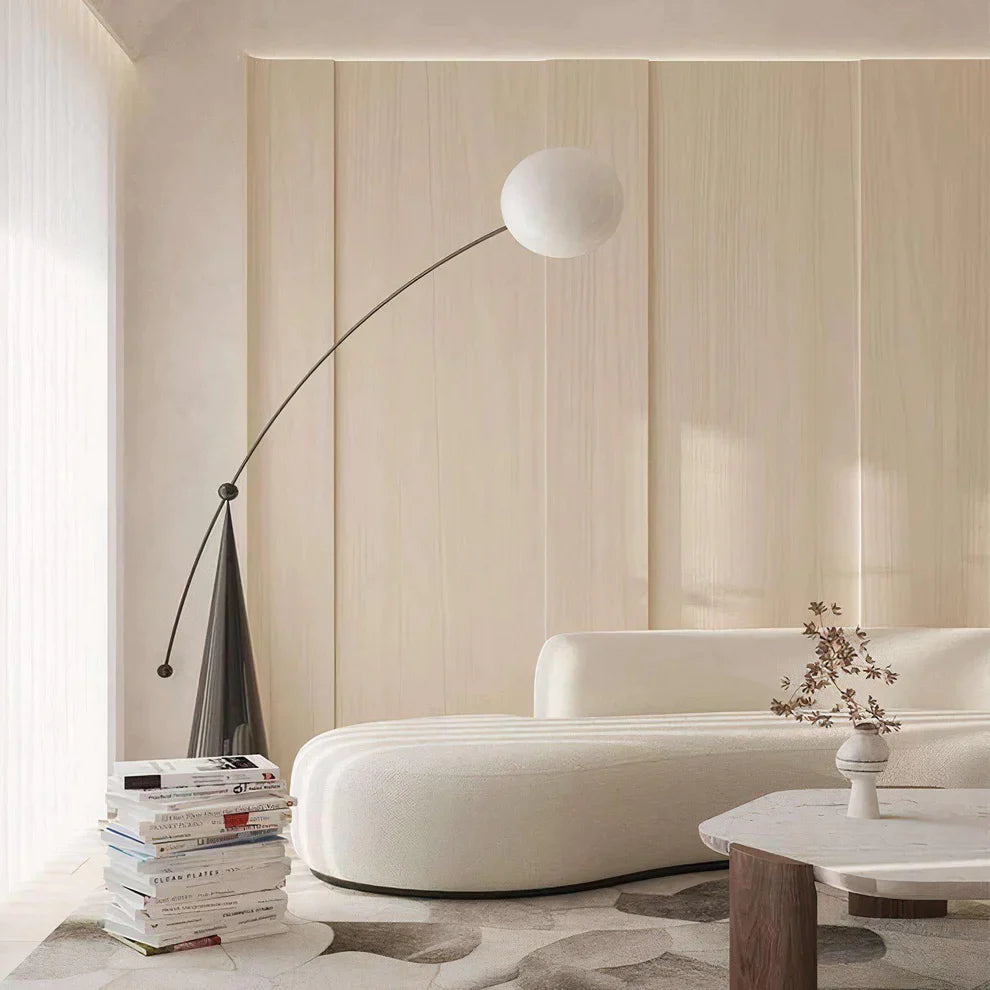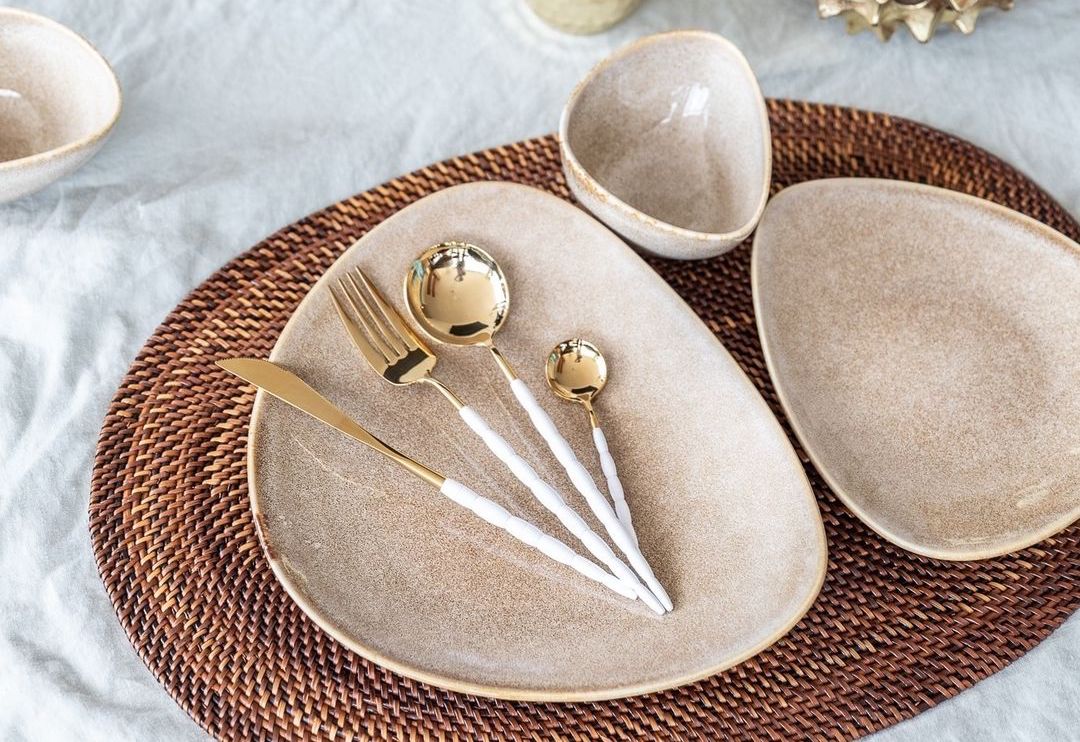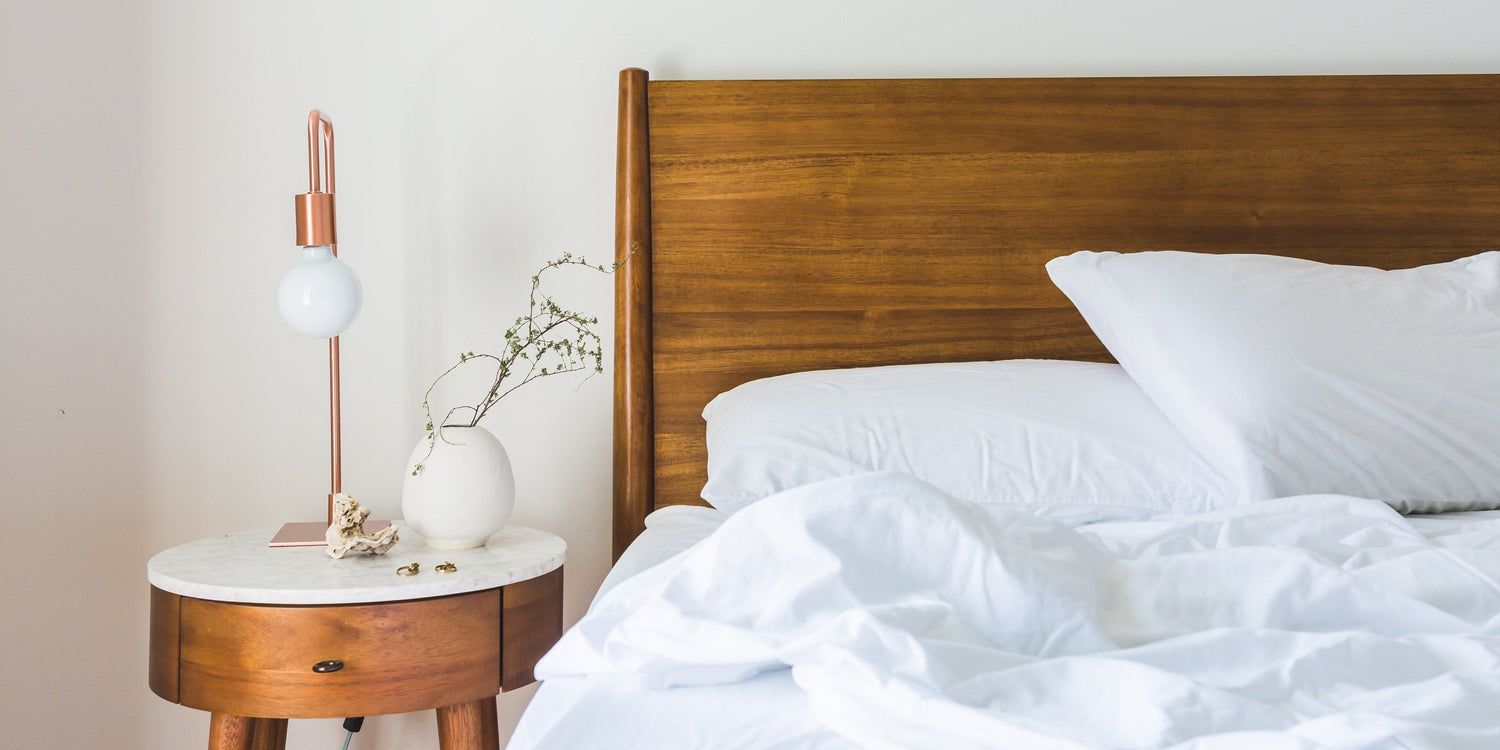Table of Contents
Designing a functional craft room is essential for unleashing creativity and enhancing productivity. A well-thought-out space can significantly impact your crafting experience, allowing for seamless transitions between various projects. Functionality should be at the forefront of your design, ensuring that tools and materials are readily accessible.

Evergreen: an Elegant and Characterful Shade
Evergreen, or vert sapin, is a dark green hue that draws its inspiration from lush coniferous forests. This sophisticated color brings depth and character to interiors, making it an ideal... Keep Reading →
Key design principles for your craft room include organization, space optimization, and comfort. Start by identifying your crafting style and the materials you frequently use. This understanding lays the foundation for a space that caters to your needs while minimizing clutter and frustration.
Consider the flow of movement within the space. Your craft room should facilitate easy access to your main tools and supplies. Position essential items within arm’s reach and organize based on frequency of use. A well-planned layout allows for an efficient workflow, making it easier to shift from one task to another.
Utilizing multi-functional furniture is crucial in maximizing the effectiveness of your craft room. Choose tables with ample surface space that can accommodate your materials and tools. Portable carts can offer mobility and additional storage without crowding your space. Make sure to incorporate a comfortable chair that supports long hours of crafting while promoting proper posture.
Storage solutions are an integral part of your design. Creative use of vertical space can significantly enhance the organization. Wall-mounted shelves, pegboards, and storage bins help keep everything in sight and easily accessible. Transparent containers enable quick identification of materials, reducing time spent searching.
Incorporate zones for specific activities. For instance, designate one area for cutting and assembling, while another serves as a painting or sewing station. By creating defined spaces, you can streamline your workflow and maintain focus on each task. Make sure each zone is equipped with the necessary tools to further boost efficiency.
Lighting is another critical aspect to consider. Natural light is optimal; however, if it’s limited, invest in high-quality task lighting to illuminate your workspace effectively. Opt for adjustable fixtures that can adapt to your needs throughout the day, ensuring you maintain clarity and prevent eye strain.
Lastly, consider the overall ambiance of your craft room. A calm, organized environment encourages creativity and inspiration. Keep your color scheme soothing yet invigorating—soft pastels or muted tones can create a serene backdrop, allowing your materials to shine. Add personal touches that reflect your style, such as framed artwork or inspirational quotes, to keep motivation at the forefront.
By adhering to these foundational principles, you’ll create a functional craft room that inspires creativity and enhances your crafting experience. Thoughtful design choices will elevate your space into an inviting haven, where ideas flourish and projects come to life.

Space Planning for Your Craft Room
Creating an efficient craft room begins with careful space planning. Assessing available space allows you to capitalize on every square foot. Measure dimensions, considering both ceiling height and floor area. Identify any architectural features like windows and doors that may affect furniture placement. This foundational step ensures that your craft room is not only functional but also promotes an inspiring atmosphere.
Smart furniture arrangement is key to maximizing workflow efficiency. Position your work table centrally to allow easy access to tools and materials. Consider a setup where everything you need is within arm’s reach. This might include placing frequently used items on a nearby cart or shelving unit. Additionally, think about workflow zones: one area for cutting, another for assembly, and a separate spot for finishing. This zoning approach reduces clutter and keeps your mind focused on the task at hand.
Incorporating storage solutions is essential to maximize your space. Utilize vertical storage, such as shelves or pegboards, to keep supplies organized without cluttering the floor. Invest in modular furniture that can adapt to your changing needs. Carts on wheels can be moved around easily while keeping supplies at hand, and storage bins help categorize smaller items. Opt for transparent containers so you can see contents at a glance, enhancing your efficiency when crafting.
Consider multipurpose furniture options. A folding table can serve as a work surface and a crafting station when not in use, saving valuable space in smaller rooms. Stacking chairs or collapsible seating provides additional options without sacrificing comfort or style. When selecting furniture, prioritize quality and durability to withstand the demands of various projects.
Lastly, don’t neglect lighting in your space planning. Natural light is ideal, but supplement it with task lighting to ensure visibility during intricate projects. Adjustable lamps can be positioned wherever you need them, keeping your workspace bright and inviting.

Choosing the Right Furniture and Supplies
To create a functional craft room, selecting the right furniture and supplies is foundational. The right choices enhance productivity, ensure comfort, and reflect your unique style. Begin by identifying essential furniture pieces that cater to your crafting needs.
Key furniture pieces typically include a large table or workstation that allows ample space for multiple projects, along with comfortable seating that provides support during long crafting sessions. Consider height-adjustable desks which can adapt to standing or sitting positions, promoting better posture and reducing fatigue.
Storage solutions are equally crucial. Look for multifunctional pieces, such as storage carts, that can easily be moved to optimize workflow and maintain organization. Shelving units not only provide vertical storage but also display areas for supplies and inspirations, merging function with style.
When evaluating materials for furniture, prioritize versatility and durability. Look for surfaces that can withstand spills and wear, such as laminated or treated wood that is easy to clean. Materials like metal and plastic can also be excellent choices for their resilience and lightweight nature, making rearrangements effortless.
Ergonomic design should be a central consideration when selecting your craft furniture. Comfort is paramount, and furniture that supports natural body posture can significantly reduce the risk of strain or injury. Opt for chairs with adjustable heights, lumbar support, and cushions made from breathable fabrics. Keep in mind the dimensions of your workspace to ensure everything fits harmoniously.
Incorporate modular furniture when possible. These adaptable solutions not only save space but also allow you to reconfigure your craft room as needed. They enable diverse setups for different types of projects, whether you’re working on scrapbooking, sewing, or painting.
Additionally, consider implementing rolling storage solutions for easy access to tools and materials while maximizing floor space. These units can be tucked away when not in use and brought out as needed, providing a clean and organized look.
Your creativity should inspire the aesthetics of your craft room. Choose furniture that resonates with your personal taste while remaining conducive to a productive environment. A cohesive color palette can enhance motivation and alertness, making the space both inviting and stimulating.
Finally, don’t overlook smaller supplies. Invest in high-quality tools and manageable storage for various crafting materials. For instance, specialized containers for markers, brushes, and papers can keep your workspace clutter-free and enhance your overall crafting experience. Your craft room should be a sanctuary of inspiration, where every piece—big or small—is thoughtfully chosen for efficiency and creativity.

Organizing and Storing Craft Materials
Effective organization is the backbone of any functional craft room. By implementing creative storage solutions, you can enhance accessibility and maintain an uncluttered workspace. Here are some strategies to elevate the organization of your craft materials.
Start with vertical storage options. Shelving units are a great way to save floor space while keeping supplies within reach. Consider adjustable shelves to accommodate various sizes of materials—think taller shelves for fabric rolls and shorter ones for smaller items. Open shelving not only provides easy access but also allows you to display your favorite craft items, adding a personal touch to the decor.
Use clear bins or containers for categorizing supplies. Transparency offers visibility, meaning you won't waste time rummaging through boxes. Organize materials by type; for instance, keep all your paint supplies in one bin, and another for yarn. Label each bin clearly to maintain the order. A simple label maker or handwritten tags can add a personalized flair while assisting quick identification.
Incorporate modular storage solutions. Carts on wheels can be particularly effective, providing flexibility to move supplies as needed. Opt for stacking systems or interlocking bins that can expand or contract based on your storage needs. A movable cart can serve numerous purposes—whether as a mobile workstation or a centralized storage area for multiple crafts.
Upcycling can become a helpful strategy in your quest for organization. Consider using repurposed jars, tin cans, or drawer organizers for smaller tools and materials. This approach is sustainable and introduces a unique character to your space. Furthermore, it allows you to customize your storage solutions to fit your specific preferences.
For paper crafting or scrapbooking, invest in a paper organizer. Vertical paper holders can keep sheets flat and organized, minimizing wear and tear. Label the sections by color or type to ensure easy access during crafting sessions.
Employ pegboards as an innovative way to store tools and supplies. Pegboards enable a flexible configuration, allowing you to rearrange items based on your immediate crafting needs. Hang scissors, ribbons, and other tools visibly to keep them accessible while decorating your workspace.
If you tend to use specific items frequently, create a designated frequently used zone. This could be a small caddy or drawer positioned conveniently on your main desk or workstation. This zone keeps essential tools at your fingertips, accelerating your workflow.
Consider the benefits of a dedicated crafting toolbox or bag for portable crafts. This ensures that you can easily transition your supplies for crafting sessions outside your home. Look for bags or containers that provide adjustable compartments, letting you modify the interior layout to suit various projects.
Implement a 'one-in, one-out' policy for craft supplies. This habit encourages you to assess every new item before introducing it to your collection, helping prevent clutter buildup. Regularly evaluate your supplies and consider donating or recycling items that you no longer use or need.
Finally, embrace technology with digital inventory systems, especially if your collection has grown extensive. Apps that track craft supplies can keep your organized spaces from becoming chaotic and help during project planning. Knowing exactly what you have at hand can spark new projects without the fear of duplicates.

Personalizing your craft space is essential for fostering creativity and making the room truly your own. A few thoughtful touches can transform a functional area into an inspiring sanctuary that reflects your personality and passions.
Start by integrating personal elements that resonate with you. This could include artwork, photographs, or memorabilia that inspires your creative process. Choose a few focal points—items that catch the eye and provoke thought. A gallery wall, for instance, can serve as both decor and motivation, allowing you to celebrate your journey as a crafter.
Color plays a significant role in setting the tone of your craft room. Opt for a color scheme that stimulates your imagination and energizes your creative spirit. Soft pastels can create a calming effect, while vibrant hues can spark excitement and innovation. Consider incorporating an accent wall in a bold color to create a sense of depth and personality in the room. Remember, the colors you choose should not only inspire you but also enhance the overall atmosphere of your workspace.
Additionally, don’t hesitate to incorporate elements that evoke emotions or memories. Whether it’s a basket woven by a loved one or a painting by a favorite artist, these objects add depth and character to your craft room. Display them proudly to remind you of your inspirations and the stories behind them.
Utilizing multi-functional furniture can also provide personalized flair while enhancing utility. Choose pieces that reflect your style—like a vintage desk or modern shelving units with clean lines—and that can adapt to your creative needs. A customizable pegboard, for example, can not only hold tools but can also be adorned with your personal designs, making it a central piece of your craft area.
Don’t forget to incorporate lighting that elevates both functionality and design. Natural light is ideal, so if possible, position your workspace near windows. However, when that’s not an option, invest in adjustable LED lights that mimic daylight or stylish lamps that add to the decor. The right lighting can transform the mood of the room and support your crafting efforts.
An effective way to keep the creative juices flowing is to display finished projects. Create designated spaces—like shelves or shadow boxes—where you can showcase your best work. Not only does this provide inspiration, but it also serves as a visual reminder of your capabilities and progress. Rotating these displays keeps the area fresh and exciting.
Make the space truly yours by incorporating textiles, such as cushions, curtains, or wall hangings, that reflect your aesthetic. Soft textures can contribute warmth and comfort, making your craft room an inviting space to spend time in. Choose materials that are both beautiful and practical, ensuring that they can withstand the demands of a busy crafting schedule.
Finally, consider integrating plants or botanical elements into your craft room. Greenery adds life and vitality and can improve focus and mood. Choose low-maintenance options that thrive in indoor conditions, or use faux plants for a less demanding alternative. Adding natural elements creates a connection with the outdoors, further enhancing your overall creative experience.
In summary, designing a functional craft room is an essential endeavor that enhances both creativity and productivity. By thoughtfully assessing your available space and incorporating smart furniture arrangements, you can create a workflow that maximizes efficiency. Choosing versatile and durable furniture, while prioritizing ergonomic design, further supports a comfortable crafting experience. Effective organization is key, and utilizing innovative storage solutions ensures your supplies remain accessible and manageable. Personalization adds a unique touch, transforming the space into an inspiring haven that reflects your individuality. By integrating these elements, you will cultivate a craft room that not only meets practical needs but also fosters creativity and joy in your projects. Your ideal craft space is within reach; embrace these principles to bring it to life.






